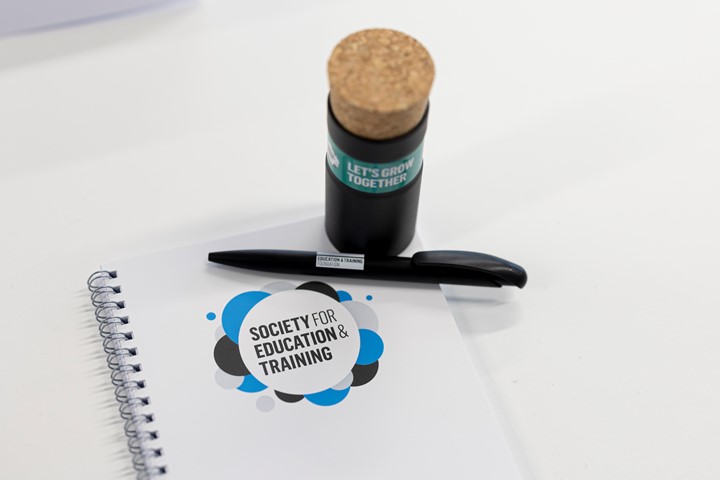Geoff Petty - Help. My brain is full. How to avoid cognitive overload
Psychologists warn that common teaching methods often overload students’ working memory. Fortunately, this can be fixed, says Geoff Petty. Geoff is the author of Teaching Today and Evidence Based Teaching and has trained staff in more than 300 colleges and schools.

When we learn something very new, we tussle with different aspects of the topic in our ‘working memory’. Unfortunately, our working memory is small. It can only store about seven bits of information at a time and can only work on four of these at the most.
So it is easy for a teacher to overload working memories while students are trying to conceptualise something for the first time. This is a problem for all teachers, but there is an easy fix. Let’s take maths as an example.
The usual two-step approach to teaching maths is to show students on the board how to solve the type of maths being studied. The teacher does a few examples, explaining the process, then asks students to do similar problems by themselves.
William Carroll saw a weakness in this two-step approach. When students are working on the maths problems alone they are trying to do two things at once: understand the mathematical process, and apply this process. For many students, this double task swamps the working memory and there is ‘cognitive overload’.
Carroll developed a ‘three-step’ approach. After the teacher has explained 'how to do them’ on the board, the students are given ‘worked examples’, very similar to those just explained by the teacher. These are problems, with the solutions fully and correctly worked out, for the students to study.
A useful activity here is to get students in pairs to study a couple of different worked examples each and then to explain their different examples to each other. Note that they have to explain them, not just read the solutions out.
It’s best to show students varied worked examples of the skill you are teaching. The more varied the examples, the easier it will be for students to adapt what they learn to different contexts.
Why are worked examples or ‘models of good practice’ useful?
In Carroll’s three-step approach, students first hear the teacher explain the mathematical process to gain the basic knowledge of the approach. Then, the peer-explaining requires that each student understands this process.
Only then do students have to apply the process by doing problems on their own. Carroll found students learned well in less time with the three-step approach, even though there was an extra step. Also, they made very few errors in the ‘apply’ phase, and they found the learning easier than with the two-step approach.

It’s not surprising that studying worked examples works well. We learn very naturally from ‘concrete’ to ‘abstract’ and we also learn very naturally by imitation. All very well, but I’m not a maths teacher. If you don’t teach maths, you will still have problems with cognitive overload and can still teach with models of good practice or worked examples. Suppose your students are not very good at:
- Critically analysing a poem
- Evaluating a marketing plan
- Punctuating a sentence
- Writing an ‘if-then’ loop in a computer programme or
- Justifying an historical argument
In all these cases you can find a ‘worked example’, ‘model of good practice’ or ‘exemplar’ to help your students understand better ‘how to do it’.
‘Peer explaining’ is only one thing you can do with models of good practice. There are other activities to try, but it is often best to use peer explaining before trying the following:
Completing a model of good practice: ‘I’ve put the full stops in this paragraph for you, but I want you to put the commas in.’ (The next model for completion has all the commas and students must provide the full stops.) ‘This computer programme has the last few lines missing. Study the programme then complete it to make it work.’ ‘This analysis of our poem needs a section on the poet’s intentions. Read the analysis then add the missing section.’
Improving an imperfect model: ‘Here is an evaluation done by a student last year. She got a merit. Improve it to a distinction standard.’ ‘Here is a paragraph punctuated by a student last year. Explain what’s wrong with the punctuation and improve it.’
Annotating a model: ‘Have a look at this assignment. Mark with arrows where each of the five assessment criteria is met.’ ‘At the end of each line of this computer programme, write an explanation in ordinary English describing what the line does.’
Assessing an imperfect model: ‘Here are three justifications for the same historical argument done by students last year. Please mark these using the mark scheme provided.’ ‘Here are three marketing plans for our Red Lion Inn. Working in groups, put them in order of effectiveness, and explain your ranking.’
Peer explaining: ‘Here are two correctly punctuated paragraphs. In pairs, study one each, then explain each punctuation mark in your paragraph to your partner.’ ‘Have a look at this well-justified historical argument. How does the writer justify her views? What use does she make of primary and secondary historical sources?’
It is important to recognise that working memory overload occurs most often when students learn a new concept or process. Once they have an initial understanding, you can stretch them with challenging tasks. Indeed, you must finish a topic with challenging tasks to get high-quality learning.






